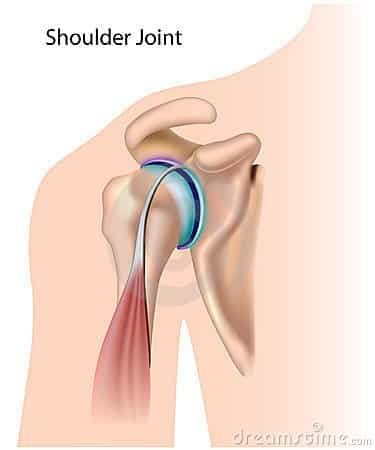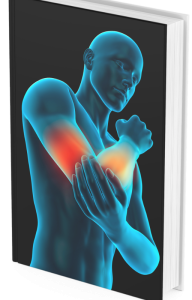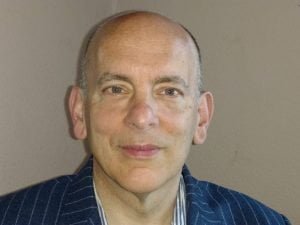Imagine the frustration of being unable to move your shoulder freely, the pain and discomfort that accompany every attempt. This is the reality for individuals suffering from frozen shoulder. In this blog, I will delve into the transformative power of osteopathy and acupuncture in offering relief and healing for frozen shoulder.
Introduction to Frozen Shoulder
Living with frozen shoulder can be a challenging journey, impacting every aspect of daily life. As I navigate through the discomfort and limitations caused by this condition, it becomes essential to understand its definition, symptoms, and the hurdles faced by individuals like me.
Definition and Symptoms of Frozen Shoulder
Frozen shoulder, also known as adhesive capsulitis, is a condition characterized by stiffness and pain in the shoulder joint. The range of motion in the shoulder becomes restricted, making simple tasks like reaching overhead or behind the back incredibly difficult. The hallmark symptoms of frozen shoulder include persistent shoulder pain, stiffness, and a gradual loss of mobility.
Impact on Daily Life and Mobility
The impact of frozen shoulder on daily life cannot be understated. Simple activities such as getting dressed, combing hair, or even lifting objects become arduous tasks. The constant pain and limited range of motion affect not only physical abilities but also emotional well-being. The frustration of being unable to move freely takes a toll on mental health, leading to feelings of helplessness and isolation.
Challenges Faced by Individuals with Frozen Shoulder
Individuals grappling with frozen shoulder face a myriad of challenges. The inability to perform routine tasks independently, the reliance on others for assistance, and the disruption of work and social life are just a few hurdles encountered. The pain and discomfort associated with frozen shoulder can also impact sleep quality, leading to fatigue and further exacerbating the overall well-being.
Despite these challenges, there is hope on the horizon. Therapies such as osteopathy and acupuncture offer promising avenues for relief and recovery. Osteopathy, with its holistic approach to healing, aims to address the root cause of frozen shoulder improving joint mobility, reducing inflammation, and alleviating pain. Acupuncture, on the other hand, leverages the body’s natural healing mechanisms to break down adhesions,by working via the nervous system i promote blood flow, and reduce inflammation in the shoulder joint.
By combining the benefits of osteopathy and acupuncture, individuals with frozen shoulder can embark on a personalized healing journey that not only targets the physical symptoms but also enhances overall well-being. This holistic approach recognizes the uniqueness of each individual’s condition and tailors the treatment plan accordingly, ensuring a comprehensive and effective recovery process.
As I navigate through the challenges posed by frozen shoulder, I remain optimistic about the possibilities that osteopathy and acupuncture offer. These therapies not only provide relief from pain and stiffness but also empower me to regain control over my mobility and quality of life. With dedication, support, and the right treatment approach, I am confident in overcoming the obstacles posed by frozen shoulder and embracing a healthier, happier future.
Understanding Osteopathy and Its Benefits
As someone who has experienced the limitations and discomfort of frozen shoulder, I understand the importance of seeking effective treatments that address the root cause of the issue. Osteopathy has emerged as a promising hands-on healing technique that focuses on improving overall health rather than just alleviating symptoms. This holistic approach resonates with me as it aims to enhance mobility, reduce inflammation, and provide pain relief through targeted interventions.
One of the key principles of osteopathy is its emphasis on identifying and treating the underlying factors contributing to conditions like frozen shoulder. By addressing the root cause of the problem, osteopaths can help restore balance and function to the affected area, promoting long-term healing and well-being. This approach aligns with my belief in the importance of holistic healing methods that consider the interconnectedness of the body.
When it comes to treating frozen shoulder specifically, osteopathy offers a comprehensive solution that goes beyond mere symptom management. By employing techniques such as stretching, gentle pressure, and resistance exercises, osteopaths can work to improve joint mobility, reduce stiffness, and enhance overall range of motion. This personalized approach ensures that each session is tailored to my unique needs, allowing for targeted and effective treatment.
Furthermore, the combination of osteopathy with acupuncture presents a powerful synergy that addresses both macro and micro levels of healing. While osteopathy focuses on the musculoskeletal system at a broader level, acupuncture targets specific points to stimulate the body’s natural healing mechanisms. This integrated approach not only aids in the treatment of frozen shoulder but also promotes overall well-being by addressing physical and mental aspects simultaneously.
Through the collaborative efforts of osteopathy and acupuncture, I am confident in my ability to regain freedom of movement, alleviate pain, and embark on a journey towards a healthier, happier version of myself. The holistic nature of these therapies resonates with my belief in the interconnectedness of mind, body, and spirit, offering a comprehensive approach to healing that extends beyond mere symptom relief.
Exploring Acupuncture as a Healing Therapy
As I delve into the realm of holistic healing for my frozen shoulder, acupuncture emerges as a beacon of hope. Acupuncture, a practice dating back thousands of years, involves the strategic insertion of thin needles at specific points on the body to stimulate the nervous system.
Embracing the essence of acupuncture means tapping into the body’s innate wisdom to address the root cause of my frozen shoulder. By triggering the release of natural painkillers, promoting blood flow, and reducing inflammation, acupuncture sets the stage for a transformative healing journey. The gentle yet profound impact of each needle serves as a reminder of the interconnectedness between mind, body, and spirit.
As you undergo acupuncture sessions, I witness firsthand the benefits it brings to my frozen shoulder. The targeted approach of breaking down adhesions and scar tissues in the shoulder joint paves the way for enhanced mobility and reduced pain. With each session, you can feel a sense of liberation as your body responds to the needling.
Benefits of Acupuncture for Frozen Shoulder
When it comes to addressing the challenges of frozen shoulder, acupuncture emerges as a beacon of hope, offering a multifaceted approach to pain relief and mobility restoration. The targeted nature of acupuncture sessions, coupled with its ability to promote blood flow, reduce inflammation, and release natural painkillers, makes it a valuable ally in my healing journey.
The synergy between acupuncture and osteopathy creates a harmonious blend of macro and micro-level healing, ensuring that my body receives the care it deserves.
The Synergy of Osteopathy and Acupuncture
Living with frozen shoulder can be a challenging experience, hindering mobility and causing persistent pain. However, through the combined powers of osteopathy and acupuncture, there is hope for relief and healing. These two complementary therapies offer a holistic approach to addressing the root cause of the issue and promoting overall well-being.
Complementary Roles of Osteopathy and Acupuncture
Osteopathy, a hands-on healing technique, focuses on improving the body’s overall health rather than just treating symptoms. When it comes to frozen shoulder, osteopathy aims to enhance joint mobility, reduce inflammation, and alleviate pain through gentle pressure, stretching, and other techniques. On the other hand, acupuncture, an ancient Chinese therapy, involves the insertion of thin needles at specific points on the body to stimulate natural healing mechanisms. By breaking down adhesions, promoting blood flow, and reducing inflammation, acupuncture complements osteopathy’s efforts in treating frozen shoulder.
Macro and Micro Level Healing Approaches
One of the remarkable aspects of combining osteopathy and acupuncture is the synergy between macro and micro healing approaches. While osteopathy works on a macro level to address joint and muscle issues, acupuncture operates on a micro level to heal tissues and cells. This dual approach ensures a comprehensive treatment that not only targets the symptoms but also enhances the body’s natural healing processes. By focusing on both the larger structural issues and the finer cellular aspects, this combination offers a well-rounded healing experience.
Enhancing Mobility and Healing Tissues
Enhancing mobility and promoting tissue healing are crucial aspects of treating frozen shoulder effectively. Osteopathy plays a key role in improving joint mobility, reducing stiffness, and enhancing overall range of motion. By addressing the underlying causes of frozen shoulder, osteopathy helps restore functionality and comfort to the affected shoulder. In parallel, acupuncture works to heal tissues by promoting blood circulation, reducing inflammation, and releasing natural pain-relieving substances in the body. This dual approach not only alleviates pain but also supports the body’s natural healing processes, leading to long-term relief and improved well-being.
Personalized Healing Journey for Frozen Shoulder
Living with a frozen shoulder can be incredibly challenging, both physically and emotionally. The inability to move my shoulder freely, the constant pain, and discomfort have been weighing me down. However, amidst this struggle, there is a glimmer of hope – a personalized healing journey tailored to my unique needs.
When it comes to addressing frozen shoulder, one size does not fit all. Each individual’s case is different, requiring tailored therapies that cater to specific requirements. This personalized approach ensures that the treatments are not only effective but also aligned with my body’s needs.
One of the key components of my healing journey is osteopathy, a hands-on healing technique that focuses on improving overall health rather than just alleviating symptoms. Osteopathy targets the root cause of the issue, making it particularly beneficial for treating frozen shoulder. By enhancing the mobility of my shoulder joints, reducing inflammation, and alleviating pain through techniques like stretching and gentle pressure, osteopathy plays a crucial role in my recovery.
Complementing osteopathy is acupuncture, an ancient Chinese therapy that involves the strategic insertion of thin needles at specific points on the body. This practice stimulates the body’s natural healing mechanisms and serves as a valuable remedy for frozen shoulder. By breaking down adhesions and scar tissues, promoting blood flow, reducing inflammation, and triggering the release of natural painkillers, acupuncture works wonders in easing my shoulder discomfort.
The synergy between osteopathy and acupuncture is truly remarkable. While osteopathy works on a macro level to improve joint and muscle health, acupuncture operates on a micro level to heal tissues and cells. This holistic approach not only targets the frozen shoulder but also enhances my overall well-being by addressing both physical and mental aspects.
One of the crucial aspects of my healing journey is the combination and intensity of treatments. Recognizing that every individual and every frozen shoulder case is unique, the therapies are tailored to my specific needs. This customization ensures that the treatments are optimized for maximum effectiveness, providing me with the relief and recovery I seek.
Regaining Freedom of Movement
One of the most debilitating aspects of a frozen shoulder is the restriction it imposes on movement. The inability to raise your arm, reach behind your back, or perform simple daily tasks can be incredibly disheartening.
The hands-on approach of osteopathy not only targets the symptoms but delves deeper to address the root cause of the issue. By focusing on enhancing joint mobility, reducing inflammation, and alleviating pain, osteopathy became a crucial ally in my journey to regaining freedom of movement.
Bid Farewell to Pain and Discomfort
The persistent pain and discomfort that accompany a frozen shoulder can be overwhelming. Simple movements that were once effortless become excruciating, impacting both physical and mental well-being. Acupuncture, with its ancient wisdom and modern applications, provided me with a profound sense of relief. By targeting specific points on the body with fine needles, acupuncture works to break down adhesions, promote blood flow, and reduce inflammation in the shoulder joint. The result is a significant reduction in pain and discomfort, allowing me to bid farewell to the limitations that once plagued me.





